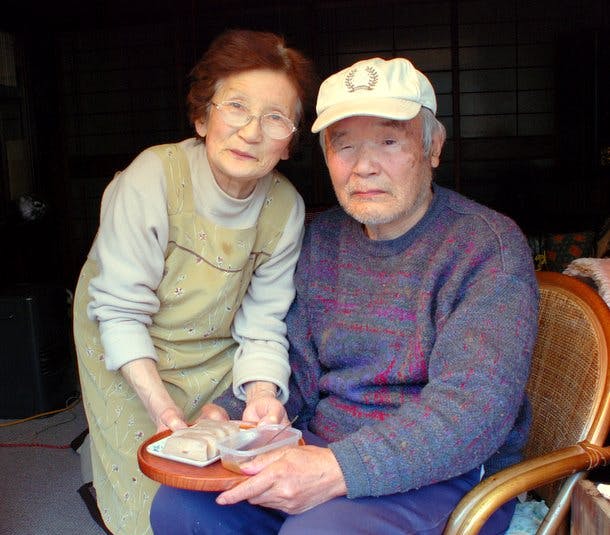
the real konyaku
Encounter the o-settai tradition along the Shikoku pilgrimage trail and discover the delightful homemade konyaku offered by Mr. and Mrs. Abe. Learn about their life story and the incredible array of crops they grow, including Japanese apricot, Japanese white peach, and various citrus fruits. Explore the unique flavor of their konyaku made from a fresh hand-grated yam bulb, setting it apart from commercial versions and earning it the title of 'the best konyaku in Japan.'
Along the Shikoku pilgrimage trail (see previous post) my girlfriend and I encountered the long tradition of hospitality offered to pilgrims called o-settai. We passed sheds stocked with thermoses of tea and mattresses for resting, benches with notes inviting henro to sit and rest. During the 30-kilometer leg between the 12th and 13th temples, we came upon a tiny farm stand along the road with varieties of citrus and, interestingly, homemade konyaku offered for sale on the honor system -- drop your payment into a jar. As we were checking out the goods, the farmers, an elderly couple named Mr. and Mrs. Abe, appeared and invited us into their home as an act of o-settai. We gratefully accepted this honor.
Over tea and coffee for the next hour, Mr. and Mrs. Abe told us of their life story, how they fell in love in the ruins of post-World War Two Tokyo, got married over their parents' objections, and ran away for three years until their families accepted their union. They told us of their children and grandchildren (one entire family performs classical music together), and of the awesome array of crops they grow on their small plot: Japanese apricot, Japanese white peach, prunes, five kinds of citrus, three kinds of persimmon, bamboo shoots, shiitake and organic vegetables. As we spoke, Mrs. Abe brought out a plate of her pride and joy -- homemade konyaku.
I never gave konyaku much thought before. The invaluable Dictionary of Japanese Food describes it as "a gelatinous paste… made from the root of a [member of the yam family] and either formed into bricks or strings… eaten for its chewy texture rather than its flavor." I've tasted this food many times before but it didn't make much of an impression on me. Then I tried Mrs. Abe's. Her konyaku had a delicate gelatin texture and a wonderful, fresh yam flavor. She served slices of it with a rustic homemade miso. Delicious.
What made it so good? Mr. Abe left for a moment and returned with a gnarly tuber bigger than a softball. "We grow this bulb then grate it by hand to make our konyaku," he explained. Commercial versions only use powdered yam. This fresh ingredient, combined with the handmade process, gives their konyaku its sublime flavor. "The best konyaku in Japan," Mr. Abe said proudly.
Mrs. Abe packed some konyaku for us and we were on our way.
